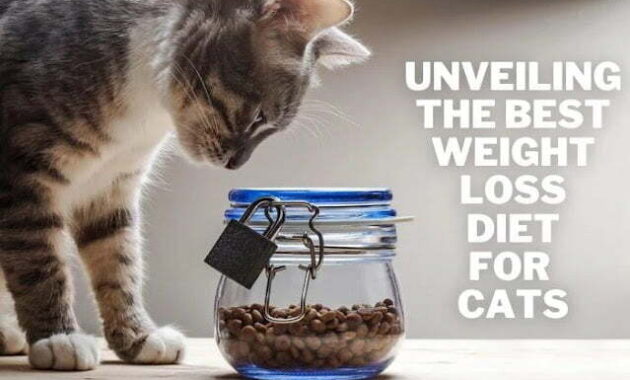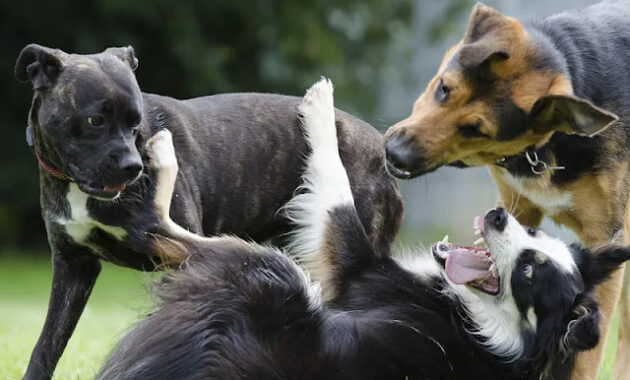As cat owners, it’s important to ensure that our furry companions maintain a healthy weight. A healthy weight not only helps our cats feel better but also improves their overall quality of life. Unfortunately, feline obesity is a growing concern, and it can lead to serious health problems if left unchecked.
Obesity in cats can lead to a host of negative consequences, including diabetes, arthritis, and liver disease. It can also reduce your cat’s lifespan and make it more difficult for them to move around and enjoy their daily activities. Therefore, it’s crucial to monitor your cat’s weight and take action if you notice any signs of obesity.
One of the most effective ways to combat obesity in cats is by implementing a weight loss plan that includes the best weight loss diet for cats. In this blog post, we’ll explore the various factors that contribute to feline obesity and how to create a weight loss plan that works. We’ll also provide insights on the best weight loss diet for cats and tips for successfully implementing a weight loss plan.
Understanding Feline Obesity
Feline obesity is a growing concern among cat owners. It’s essential to understand the causes of feline obesity so that we can take preventative measures. The primary causes of obesity in cats are a sedentary lifestyle, overfeeding, and poor nutrition.
How to determine if your cat is overweight
To determine if your cat is overweight, there are a few signs to look out for. These include a visible layer of fat over the ribs and spine, a lack of waistline, and difficulty feeling the ribs. Additionally, if you notice your cat is less active than usual or has trouble performing everyday activities, it could be a sign of obesity.
Health risks associated with obesity in cats
The health risks associated with feline obesity are significant. Obesity in cats can lead to a higher risk of diabetes, arthritis, and liver disease. Additionally, it can make it harder for cats to groom themselves, resulting in matted fur and skin problems. Obesity can also shorten your cat’s lifespan and make them more prone to certain types of cancer. Read also
Therefore, it’s crucial to address feline obesity as soon as possible by implementing a weight loss plan that includes the best weight loss diet for cats. Working with a veterinarian can help you determine the most effective weight loss plan for your cat based on their individual needs and circumstances.
Creating a Weight Loss Plan for Your Cat
Creating a weight loss plan for your cat can be a challenging task, but it’s essential for their health and well-being. As with humans, obesity in cats can lead to a range of health problems, including diabetes, arthritis, and heart disease. Here are the key steps involved in creating a weight loss plan for your cat, include:
1. Consulting with a veterinarian
Creating a weight loss plan for your cat is an important step in combatting feline obesity. The first step in creating a weight loss plan is to consult with a veterinarian. A veterinarian can evaluate your cat’s overall health and provide recommendations for the best weight loss plan, including the best weight loss diet for cats.
2. Setting realistic weight loss goals
Setting realistic weight loss goals is essential for creating a successful weight loss plan. It’s important to remember that weight loss is a gradual process and that your cat’s progress may vary. A veterinarian can help you set achievable weight loss goals based on your cat’s age, breed, and overall health.
3. Establishing an exercise routine
In addition to a healthy diet, exercise is a critical component of a weight loss plan. Establishing an exercise routine can help your cat burn off excess calories and improve their overall health. This can include playing with toys, going for walks (if your cat is leash trained), or providing a climbing tree or scratching post for your cat to use.
Remember to start slowly and gradually increase the duration and intensity of your cat’s exercise routine. It’s also important to monitor your cat’s progress regularly and adjust the weight loss plan as needed. With dedication and a little patience, you can create a weight loss plan that helps your cat achieve a healthy weight and improves their overall quality of life.
The Best Weight Loss Diet for Cats
High-protein, low-carbohydrate diets
When it comes to choosing the best weight loss diet for cats, high-protein, low-carbohydrate diets are generally considered the most effective. These diets help cats feel full longer while still providing the necessary nutrients for their overall health. Additionally, they can help cats burn fat more efficiently than other types of diets.
Wet food versus dry food
Wet food is often considered a better option than dry food when it comes to weight loss. This is because wet food typically contains more protein and fewer carbohydrates than dry food. Additionally, it can help your cat stay hydrated, which is important for maintaining overall health.
Importance of portion control
Portion control is another crucial factor when it comes to implementing the best weight loss diet for cats. It’s important to measure out your cat’s food to ensure that they are receiving the appropriate amount of calories for their weight loss goals. This can also help prevent overfeeding and reduce the risk of obesity in the future.
Remember to consult with a veterinarian before starting any weight loss diet for your cat. A veterinarian can help you determine the best weight loss diet for your cat based on their individual needs and health status. With dedication and consistency, you can help your cat achieve a healthy weight and live a longer, happier life.
Tips for Successfully Implementing a Weight Loss Plan
Implementing a weight loss plan for your cat is a crucial step in helping them achieve a healthy weight and reducing the risk of obesity-related health problems. Once you’ve consulted with a veterinarian and established a weight loss plan for your feline friend, the next step is to successfully implement it.
This can be challenging, as cats can be resistant to changes in their diet and exercise routin. eHere are some tips for successfully implementing a weight loss plan for your cat:
1. Slowly introducing changes
Successfully implementing a weight loss plan for your cat takes time and effort. One of the most critical tips for success is to introduce changes slowly. Abrupt changes to your cat’s diet or exercise routine can lead to stress and resistance. Instead, gradually introduce new foods or activities to help your cat adjust to the changes.
2. Monitoring progress
Monitoring your cat’s progress is also crucial for successful weight loss. Regular weigh-ins and progress checks can help you track your cat’s weight loss and make adjustments to the weight loss plan as needed. Keep a record of your cat’s progress to help you stay motivated and on track.
3. Rewards and positive reinforcement
Rewards and positive reinforcement can also be helpful when implementing a weight loss plan. Treats can be given as rewards for achieving weight loss goals, but it’s important to choose low-calorie treats that fit within your cat’s daily calorie intake. Additionally, positive reinforcement through playtime or cuddles can help motivate your cat to continue with the weight loss plan.
Remember that implementing a weight loss plan for your cat can be a gradual process, and every cat’s weight loss journey is different. It’s important to stay patient and consistent with the weight loss plan to achieve the best results. With the right approach, you can help your cat achieve a healthy weight and live a longer, happier life.
Conclusion
Maintaining a healthy weight for cats is essential for their overall health and well-being. Obesity can lead to a host of health problems, including diabetes, arthritis, and heart disease.
Implementing the best weight loss diet for cats, such as a high-protein, low-carbohydrate diet, portion control, and introducing an exercise routine, can help your cat achieve a healthy weight and reduce the risk of obesity-related health problems.
Remember to consult with a veterinarian before making any changes to your cat’s diet or exercise routine. With dedication, patience, and consistency, you can help your cat achieve a healthy weight and live a longer, happier life.
If you have an overweight cat, don’t wait to take action. Start implementing a weight loss plan today to help your cat achieve a healthy weight and enjoy a better quality of life. By taking the steps to help your cat achieve a healthy weight, you’re making an investment in their future health and happiness.


